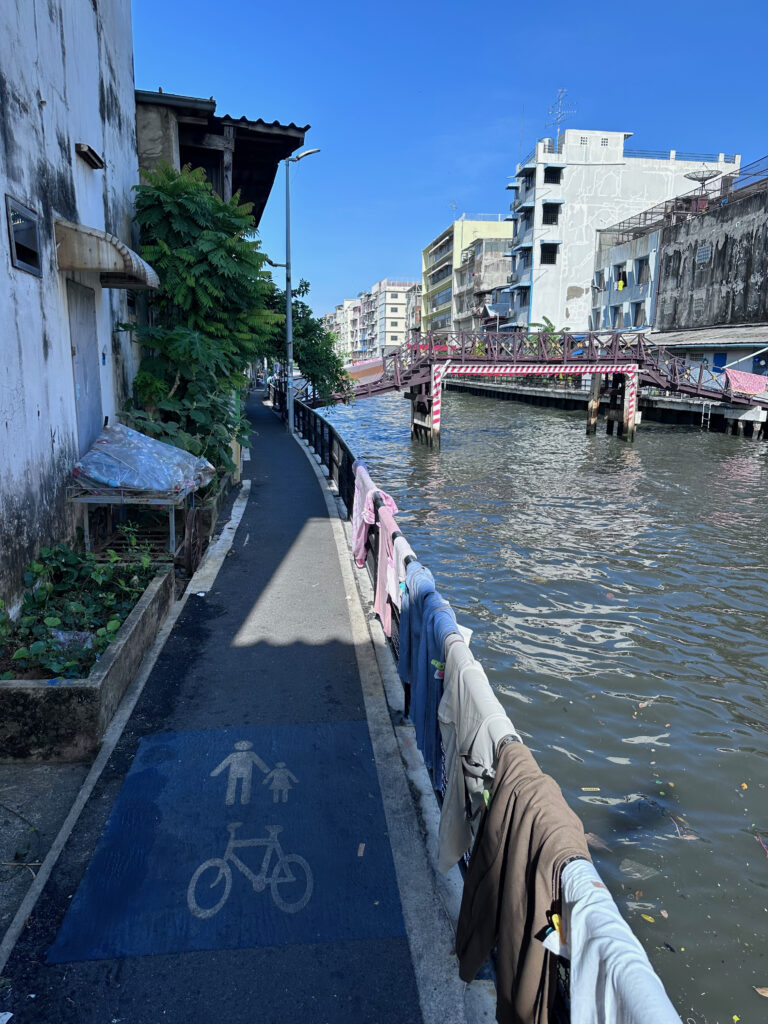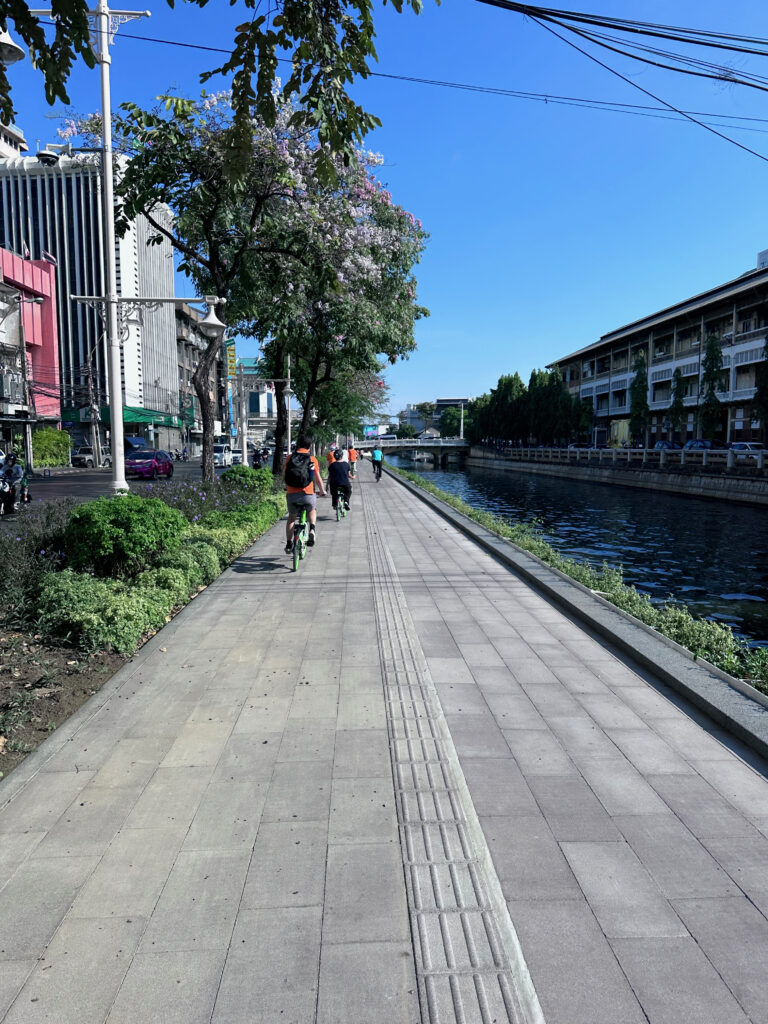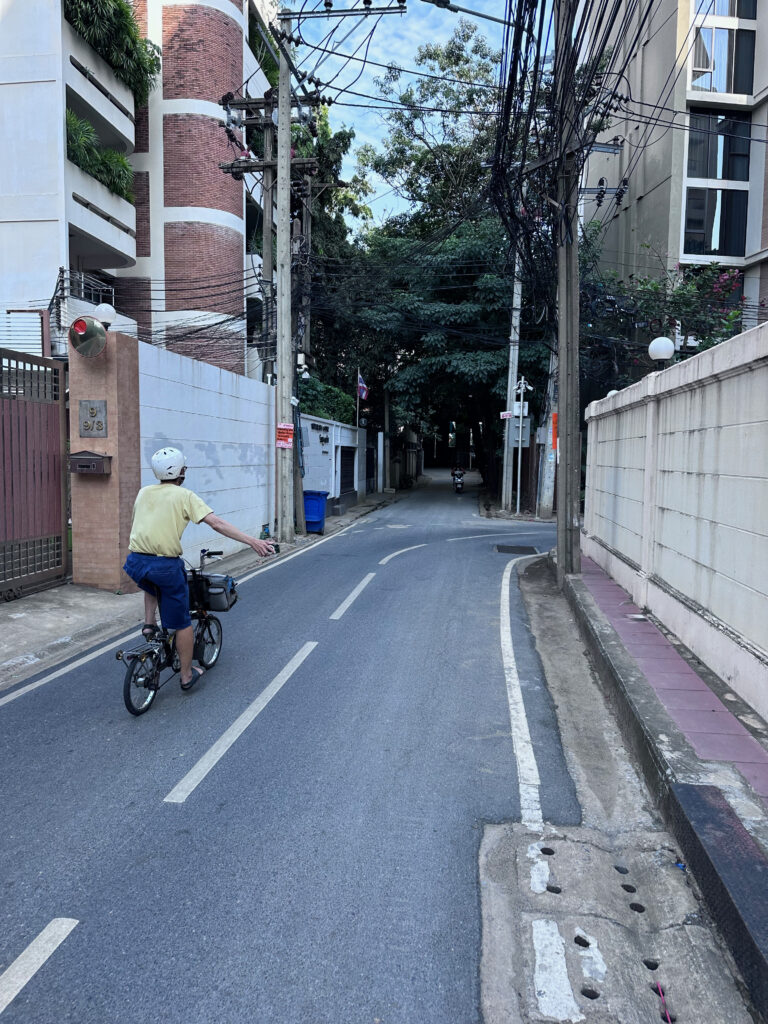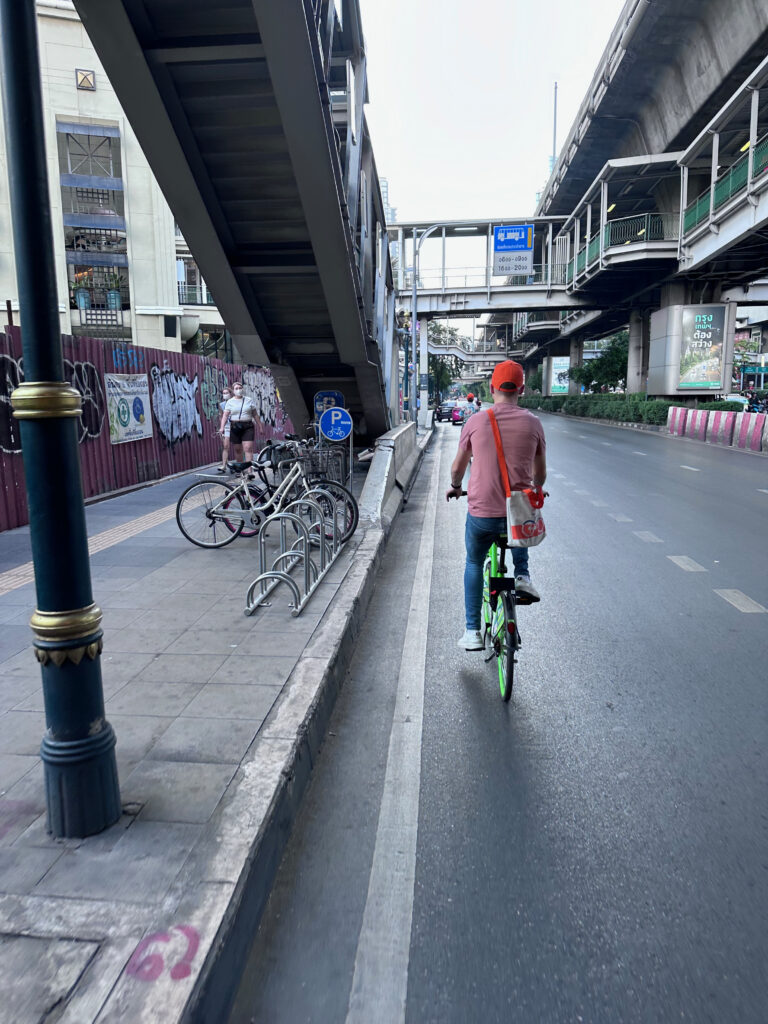Cycling / Hot weather
Building a ‘cool air’ cycling system in hot, humid Bangkok – Mobycon’s first ACTIVE programme in Southeast Asia – Part 1
What would a high-quality, inclusive, cohesive cycling system look like in a dense city like Bangkok, Thailand, with almost 10 million inhabitants living in a tropical climate? In February 2024, Mobycon’s Brett Petzer joined Margot Daris of the Dutch Cycling Embassy, Marco Mulder of Arcadis, and Teun Zeeger of the Dutch Ministry of Infrastructure and Water Affairs in search of an answer. We travelled to Bangkok for a week of capacity-building workshops and public engagement, funded by the Dutch Ministry as part of its ACTIVE (Alliance for Cycling and Walking Towards International Vitality and Empowerment) programme, with very close cooperation and support from the City of Bangkok, who hosted three days of intensive, full-day workshops, and the Dutch Embassy in Bangkok, who hosted cycling study tours of the city, receptions, and meetings.
By the end of the week, we had spent hours cycling through the city, led by one of the city’s greatest advocates for everyday cycling, Mr. Pae Lertsavetpong. What we saw was a familiar theme across the capacity-building workshops: a city in which cycling could instantly deliver more affordable, more reliable, healthier mobility for millions of residents, if only it was allowed a fair share of resources, such as road space, long-term investment, and priority in traffic.
Anyone who has cycled in Bangkok will know that it is a flat city crisscrossed by canals. The footpaths flanking these canals are already used by cyclists to access the city’s dense network of narrow, low-speed access roads, although navigating these for anything more than a short trip requires a great deal of local knowledge. These elements alone, in a dense, mixed-use city like the Thai capital, could enable millions of residents to make local trips by bicycle – to places of work or education, to the shops, or to a local café or park.




However, this promising hyper-local network is too often severed by a vast grid of urban stroads that run through the city fabric, generating intense and near-constant noise and air pollution. Bangkok’s ground-level road network has been designed for maximum throughput of motor vehicles, a strategy that quickly reached its physical limit earlier this century, resulting in motor traffic congestion that lasts throughout the day. In addition, the city’s planners make heavy use of mid-block pedestrian overpasses instead of intersections at ground level. The result is that walking in Bangkok produces long detours, even for short trips, as one must go out of one’s way to walk upstairs, cross a road, and descend again. This system too often leaves no option at all for wheelchair users, or anyone who is not able to comfortably climb up and down stairs to cross a road, or anyone who is on foot and in a hurry – waits at traffic signals are long, and motor traffic is allowed to turn across a green pedestrian signal.
While these challenges are substantial, Bangkok is blessed with an ambitious municipal government open to ideas and willing to embrace pragmatic, tactical changes. In Part 2 of this post, we discuss some of the concrete proposals that emerged from Mobycon and partners’ week of workshops, study tours, and talks.
 ">
">Brett Petzer
‘The hard work and the resources dedicated to making claims for space in a city are a reflection of their true priorities. I want these claims to become more equitable, so that motorists must work as hard to retain parking space as cyclists and pedestrians have to work to gain safe space.’

